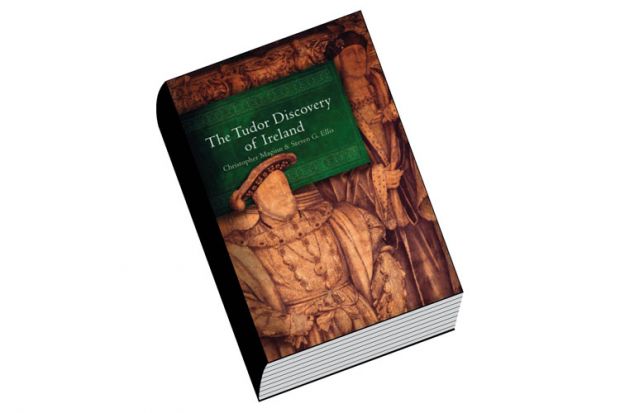Ireland was a problem for the Tudor monarchs. It was also, as Christopher Maginn and Steven Ellis demonstrate, something of a mystery. Both Henry VII and Henry VIII had to attempt to rule in Ireland when almost nobody in their government had ever set foot there, and in an age when personal contacts were crucial to the maintenance of government. To compound their difficulties, their Yorkist rivals had rather better Irish links, and Ireland offered a promising foothold for pretenders to the throne. Furthermore, both these kings had significant ambitions when it came to securing their title, extending their authority, increasing their revenue and consolidating their military might, and Ireland offered considerable challenges in all these areas. Dependable information about this strange and intractable island was therefore highly necessary.
At the heart of this book is an important manuscript called the Hatfield Compendium. It comes from the Cecil Papers, now held in Hatfield House Archives, and is a collection of different documents about Ireland dating from the second half of Henry VIII’s reign. The first two sections of this book focus on the manuscript, being a detailed account of the eight component parts, followed by the transcribed manuscript itself. The final section is an overview of Tudor relations with Ireland during the reigns of Henry VII and Henry VIII, and it might have been better if this section had come first. As it stands, the first section, although obviously valuable for specialists, is an exceedingly detailed and rather dry account of the manuscript, which might have been better as an appendix. The transcribed manuscript is also not for the faint-hearted, but is undeniably fascinating. The last part, where the authors offer their analysis of this material, and place it in broader context, is a much more satisfying read.
This latter section shows that the first two Tudor kings, in attempting to govern Ireland, went through a complicated series of initiatives, reversals, renewed ambitions for reform and distractions from elsewhere. The central theme of this book is how all this was further encumbered by the lack of reliable information about Ireland. Time after time, painfully accrued experience was forgotten when advisers retired or died, until Thomas Cromwell, with his usual efficiency, seems to have realised just how much was being lost. The Hatfield Compendium was not just a depository of useful information, but in itself a testimony to the growing sense of urgency about the problems posed by Ireland and the regime’s anxious and often haphazard attempts to acquire proper data.
This acquisition of knowledge is described by the authors as “the Tudor discovery of Ireland”, which is a nice ringing phrase, but one that does not entirely do justice to the amount of misinformation, vacillation and conflict within Tudor policy. Still, by the end of Henry VIII’s reign, there was undoubtedly a new level of engagement with Ireland; notably, the king no longer described the Irish as “enemies”, but had started to call them “rebels”, indicative of his resolve to impose his kingship there. It is debatable how far Henry got with this. Yet his government at least had a better grasp of what they had to tackle.
Lucy Wooding is reader in early modern history, King’s College London.
The Tudor Discovery of Ireland
By Christopher Maginn and Steven G. Ellis
Four Courts Press, 240pp, £45.00
ISBN 9781846825736
Published 10 July 2015




